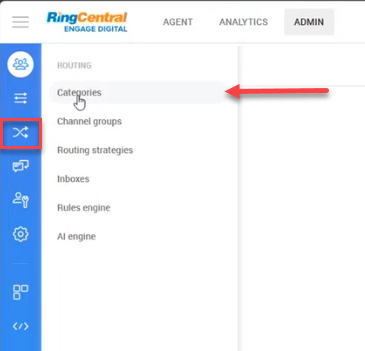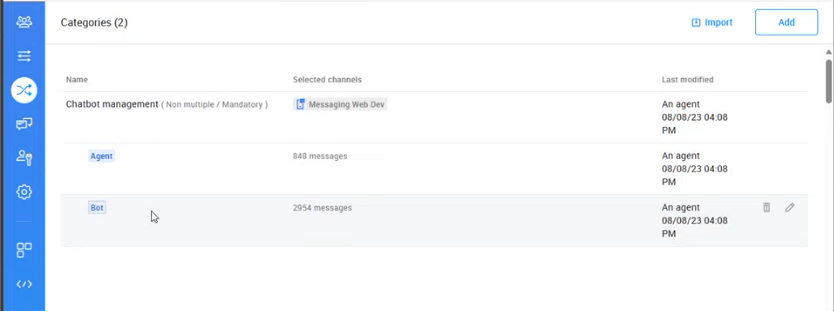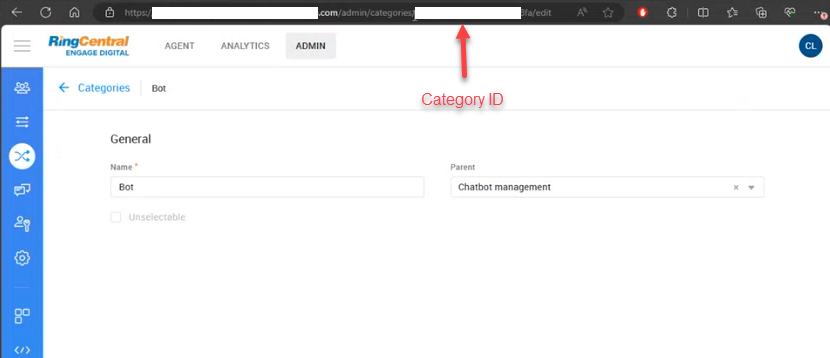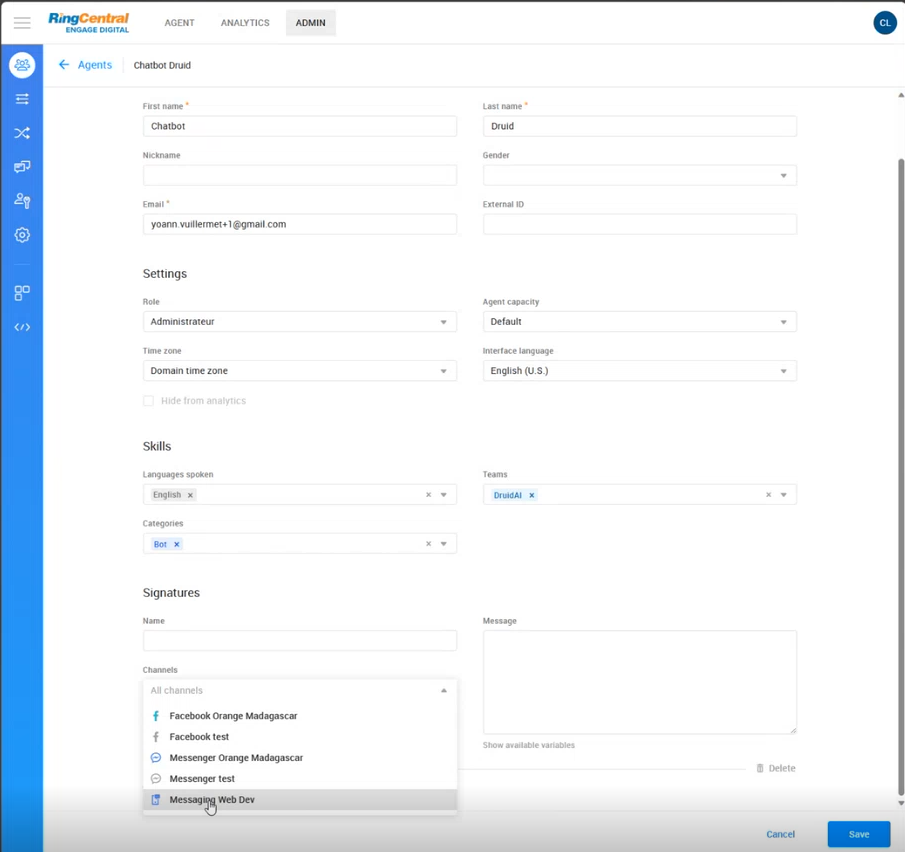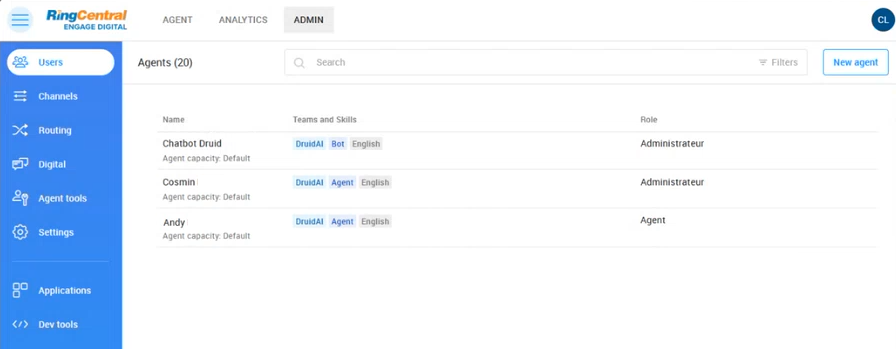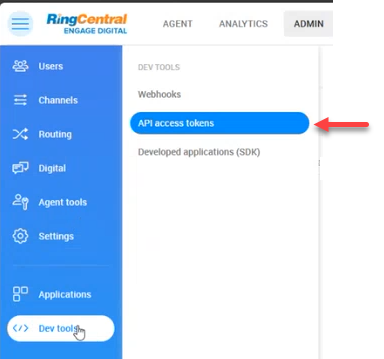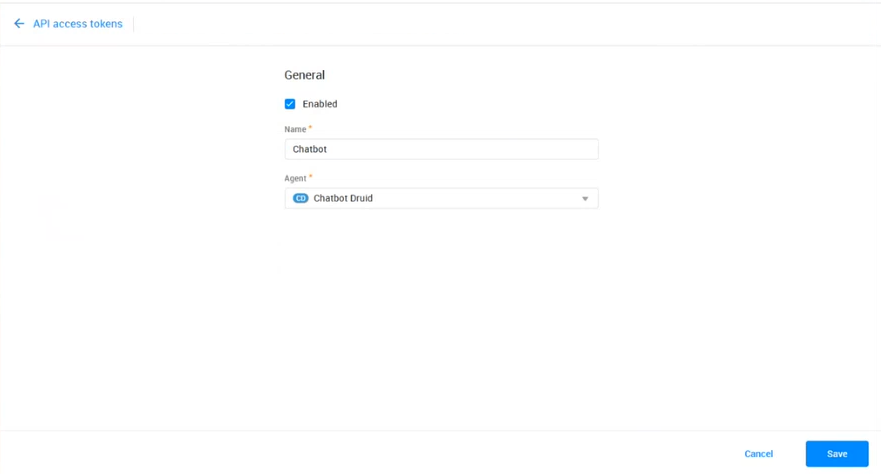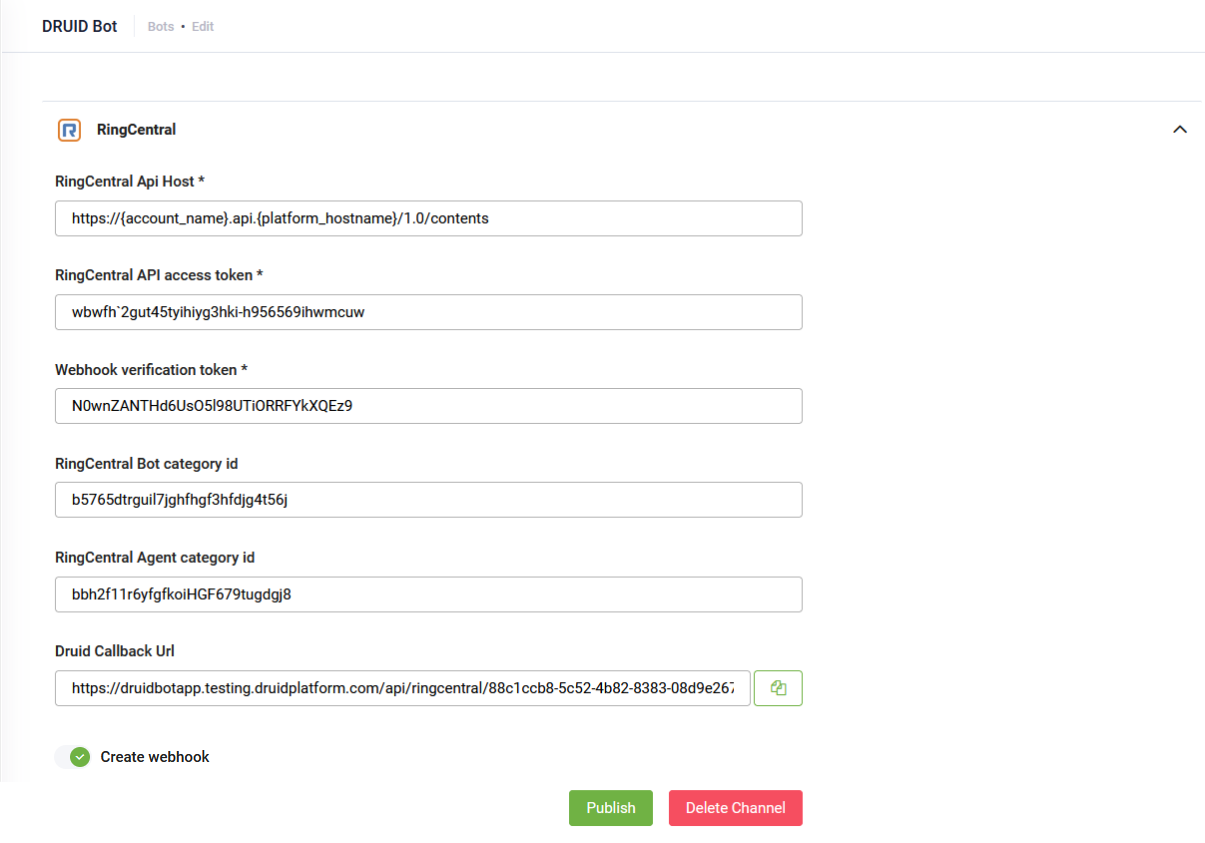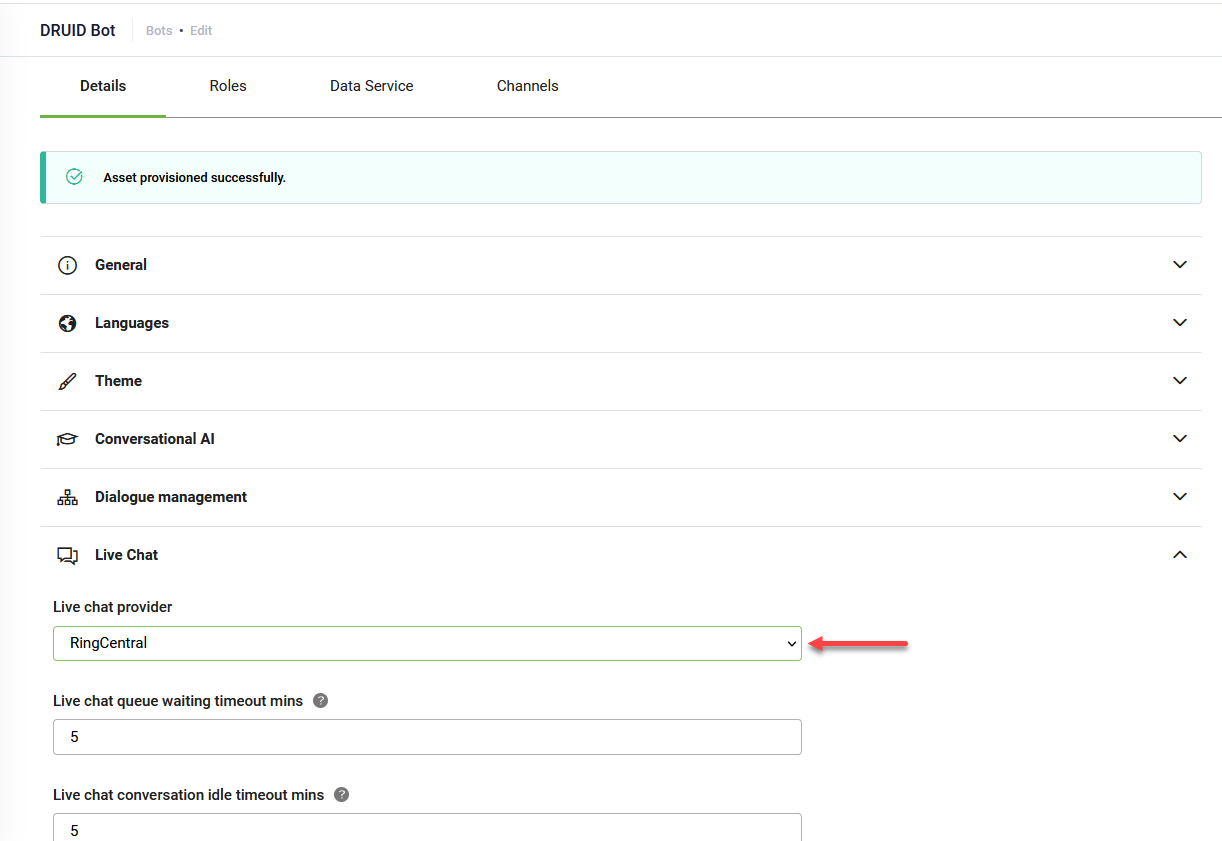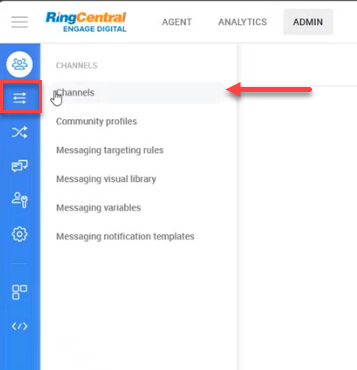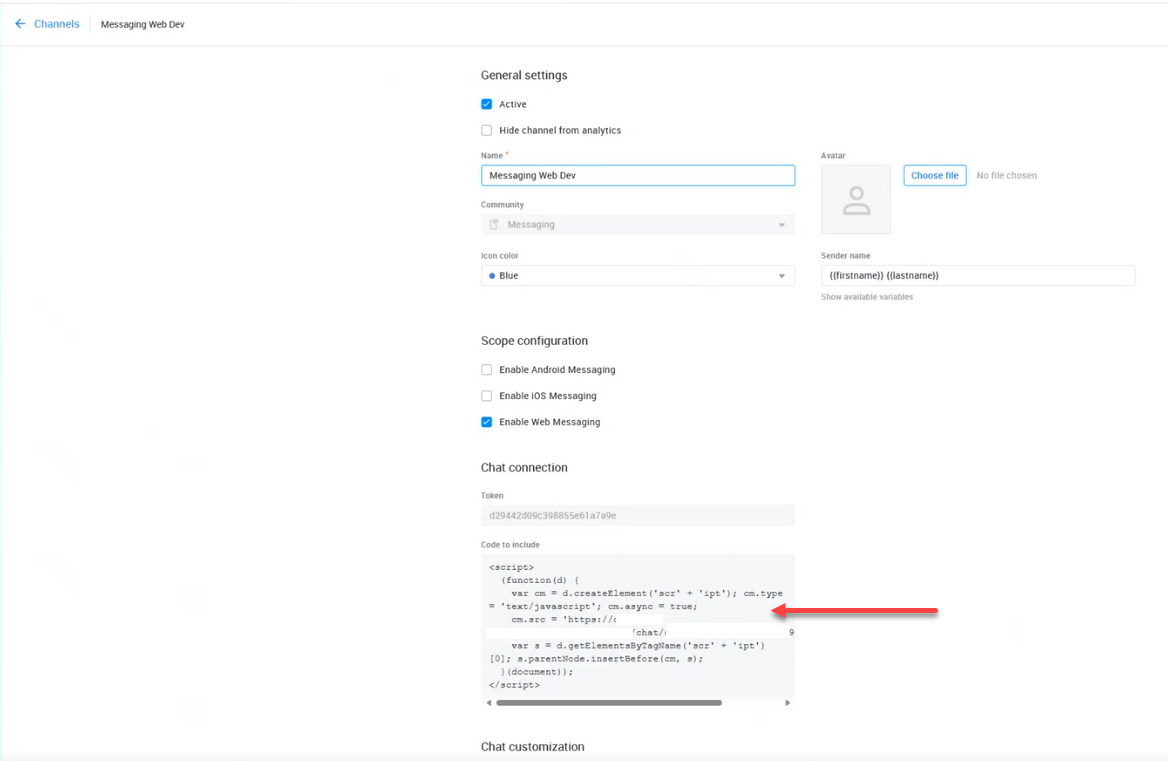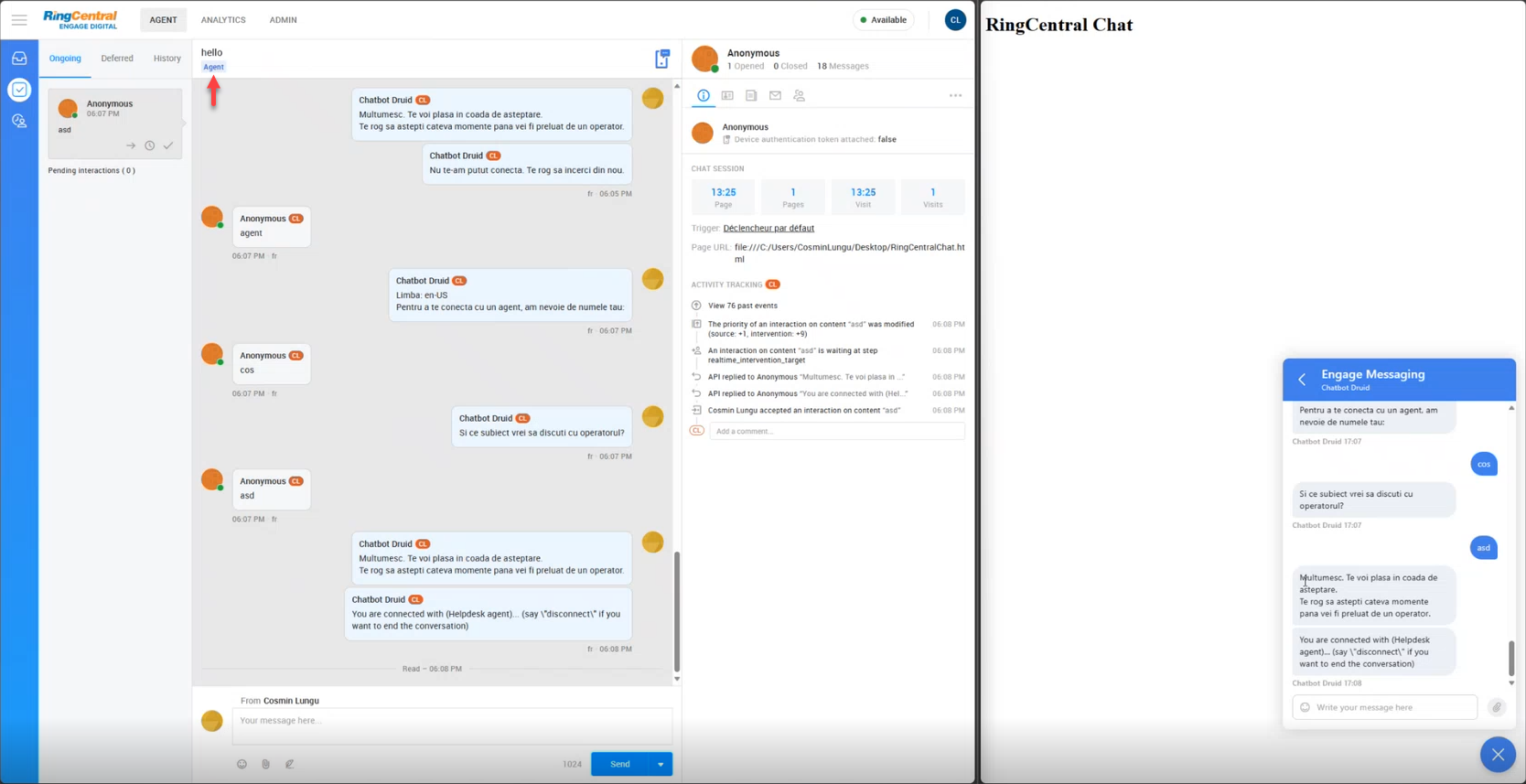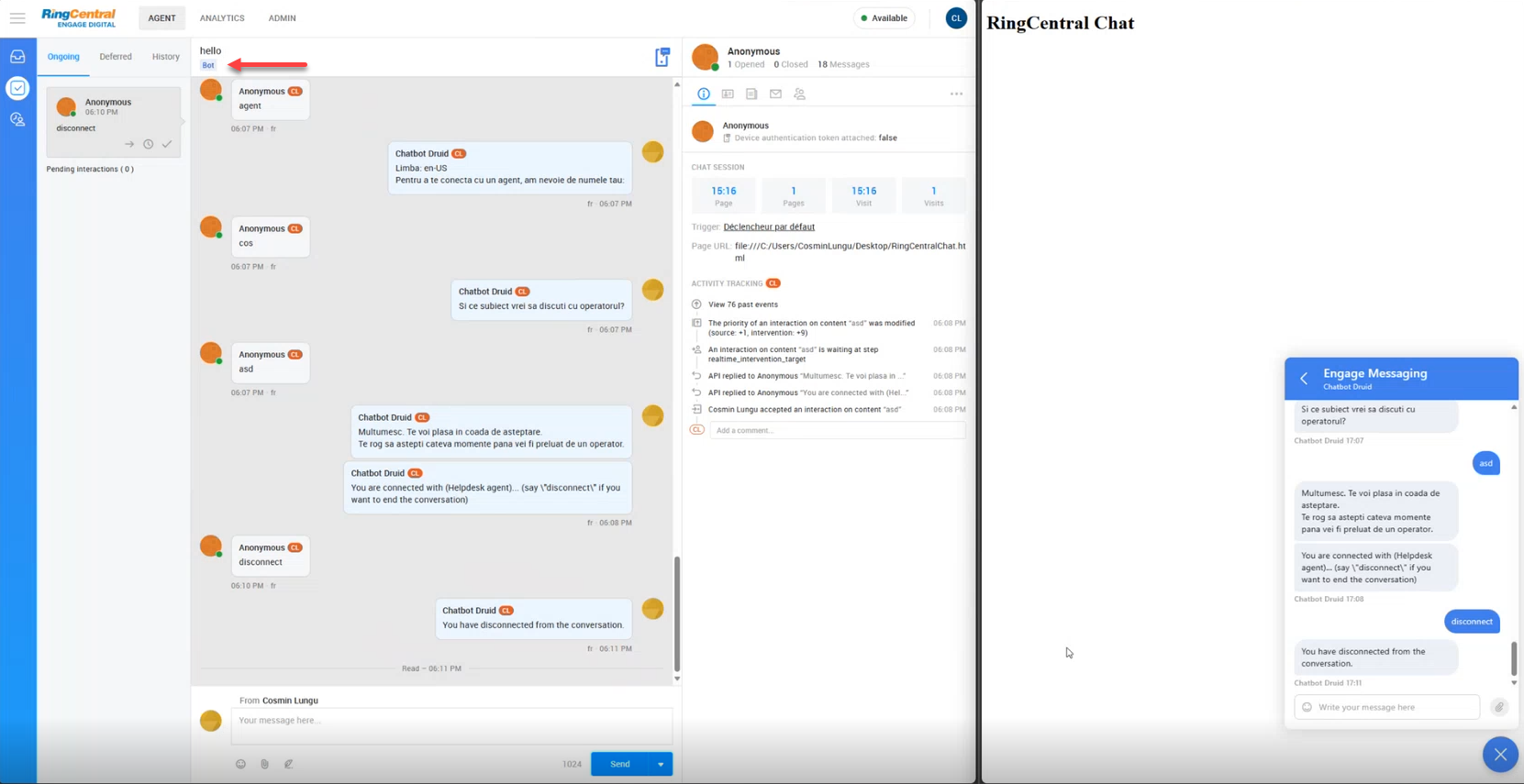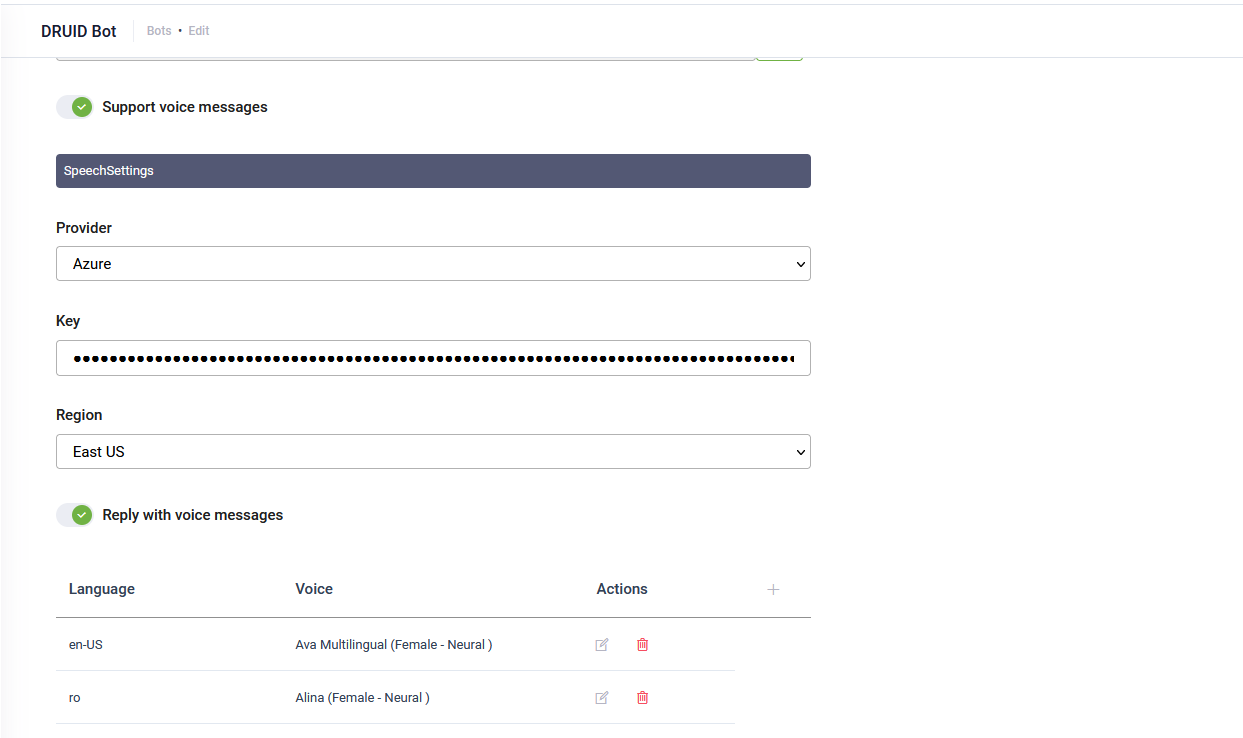RingCentral
RingCentral is a multi-channel integrator, which also offers live chat capabilities. DRUID enables you to create the bot once, then integrate it with RingCentral to deploy it in your preferred channel.
DRUID integrates RingCentral as a channel only not as a live chat provider. The live chat sessions are covered by RingCentral. DRUID notifies RingCentral that the user needs to be taken by an agent, and then directs the conversation to the agent and will NOT pass the conversation through DRUID anymore.
Prerequisites:
- You built and published a Druid chat bot.
- You have a RingCentral environment and an admin account.
- For DRUID on premise deployments, make sure that you provide access to/from the necessary messaging endpoints as follows:
| Outbound | DRUID.BotApp |
| Inbound | DRUID.BotApp |
This section describes how to integrate a DRUID chatbot with RingCentral.
Step 1. Create RingCentral categories
Categories are labels assigned to messages that are handled on the RingCentral Engage Digital platform. You can use categories to identify message channels. They help identify where the messages are routed (either to the bot or to an agent).
Log in your RingCentral environment using an admin account. On the toolbar click ADMIN, then on the main menu, click Routing and select Categories.
Add two categories under the same parent category (Chatbot management), as follows: Agent and Bot.
For each of the two categories, get the category ID by following these two steps:
- Click to edit the category.
- From the browser get the category ID and save it as you need the ID to configure the RingCentral channel in DRUID.
Step 2. Create Ring Central agents
Log in your RingCentral environment using an admin account. On the toolbar click ADMIN, then on the main menu, click Users and select Agents.
Create an agent for routing the messages to the bot. Provide the First name, Last name, Email, select the role Administrator, select the category Bot, and from the Channels field, select the channel where you will deploy the RingCentral bot.
Create as many agents with category Agent as helpdesk agents you have in your team.
Step 3. Create a RingCentral bot / virtual agent
RingCentral offers two distinct functionalities: bots and virtual agents. Bots are tailored tools designed to accomplish specific tasks, while virtual agents harness artificial intelligence to engage in more complex conversational interactions.
Creating a RingCentral bot
This section outlines the steps for creating a RingCentral bot:
- On the toolbar click ADMIN, then on the main menu, click Dev tools and select API access tokens.
- At the top right corner of the API access tokens page, click Add. The bot configuration page appears.
- Tick on Enabled.
- Enter a name and from the Agent field, select the agent that has the category Bot (the one you created at step 1).
- Click the Save button. The bot appears in the API access tokens page.
- Copy the API access token generated tor the bot and save it as you will need to configure the RingCentral channel in DRUID.
Creating a RingCentral virtual agent
To create a RingCentral virtual agent, refer to the RingCentral documentation.
Step 4. Activate the RingCentral channel in Druid
- Log in the DRUID Portal and from the main menu, select your bot. The bot configuration page appears by default on the Details tab.
- Click the Channels tab, then click RingCentral. The RingCentral section expands.
- Enter the RingCentral Api Host in the following format: https://{account_name}.api.{platform_hostname}/1.0.
- In the RingCentral API access token field, enter the access token you copied at Step 3. Create a RingCentral bot / virtual agent.
- Click the Generate button to generate the Webhook verification token.
- In the fields RingCentral Bot category id and RingCentral Agent category id, enter the IDs of the two categories (Bot and Agent) you copied at Step 1. Create RingCentral categories.
- If integrating with a RingCentral virtual agent, toggle the Create webhook option to off; otherwise, keep it toggled on.
- Click the Publish button. The channel activation might take up to 1 minute.
After the channel’s activation, the following fields are available in DRUID:
- [[ChatUser]].ChannelId = "ringcentral"
- [[ChatUser]].UserId - Stores the unique identifier of the RingCentral user account.
-
[[ChatUser]].RingCentralInterventionId - Stores the intervention ID from RingCentral. This field is available in DRUID 8.9 and higher.
After the channel's activation, a default webhook is created in RingCentral.
Step 5. Configure DRUID Live Chat for RingCentral
To use RingCentral's live chat capabilities, in DRUID, go to the bot details page and in the Live Chat section, from the Live chat provider field, select RingCentral.
Step 5: Configure the RingCentral Webhook
To configure the RingCentral webhook, in your Engage Digital platform, click ADMIN on the navigation toolbar and on the main menu, click Dev tools and select Webhooks. Click to edit the webhook.
From the Channels field, select the channel on which the webhook will be listening (the channel where the RingCentral bot will be deployed).
The default webshook subscription is content.imported (for user-bot connection). For live chat, you need to add the following additional subscriptions:
- content.replied
- content.thread_auto_closed
- content.thread_closed
- handoff_notification
- intervention.assigned
- intervention.canceled
- intervention.closed
- intervention.opened
- intervention.recategorized
- intervention.reopened
- task.recategorized
For detailed description of these subscriptions, see RingCentral documentation.
Step 6. Deploy the Ring Central bot
In your Engage Digital platform, click ADMIN on the navigation toolbar and on the main menu, click Channels and select Channels.
The list of channels where you can deploy your RingCentral bot appears.
Click on the desired channel.
We will deploy the bot to a web channel, we select Messaging Web Dev.
From the Chat connection section, copy the code from the Code to include field and include it in a web page.
This is how our Ring Central bot looks like.
Step 7. Talk to your bot
In the channel where you deployed the RingCentral bot, start talking to the bot. Log in the RingCentral Engage platform as an agent.
When the agent is talking to the user, the Agent label displays to indicate that the user messages are routed to a helpdesk agent.
When the agent is no longer in a conservation with the user, the Bot label displays to indicate that the user messages are routed to the bot.
Receiving and Processing Voice Messages
DRUID supports audio messages only through Microsoft Cognitive Services and ElevenLabs. For Microsoft Cognitive Services, it supports all languages available in the Azure Speech Service. For a complete list of supported languages, refer to Language and Voice Support for the Speech Service.
Here's how it works:
- Receive audio messages. When a user sends an audio message via RingCentral, the bot will:
- Process the audio recording using Azure Speech/ElevenLabs resources configured in the channel settings.
- Recognize the language for Speech-To-Text (STT) based on the user's language ([[ChatUser]].Language).
- Log in the Conversation History the user message type as 'Audio Recording'.
- Process audio. The bot:
- Converts the audio message to text using Microsoft Cognitive Services/ElevenLabs.
- Uses the converted text to predict the next conversational step.
- Respond. By default, the bot will respond to voice messages with text. You can choose the bot to reply with voice.
To enable voice messages support, follow these steps:
- In the channel configuration page, tap on Support voice messages.
- Select the Speech provider (either Azure or ElevenLabs), then enter the required details:
- For Azure, enter your MS Azure Speech API key and select the region.
- For ElevanLabs, enter your API key.
- By default, the bot replies with text. To have the bot respond with voice, toggle on Reply with voice messages.
- In the table, click the plus icon. A row is added to the table.
- From the Language drop-down, select the bot language (default or additional) and from the Voice drop-down, select the human-like neural or standard voice the chatbot will use to respond to the user.
- Click the Save icon displayed inline. You can add more languages and different voices per language as best suits your needs.
- If the channel has not been published yet, click Publish.
- Click the Save button at the bottom of the page to save the bot configuration.
